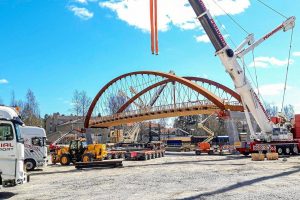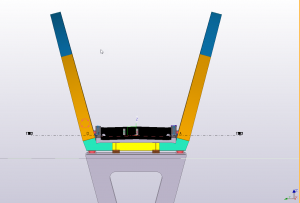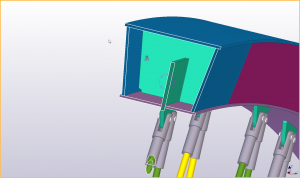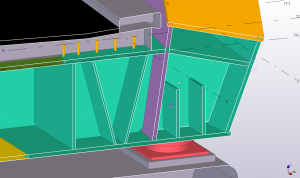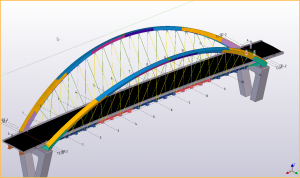Vanhankirkonsilta pedestrian and bicycle bridge
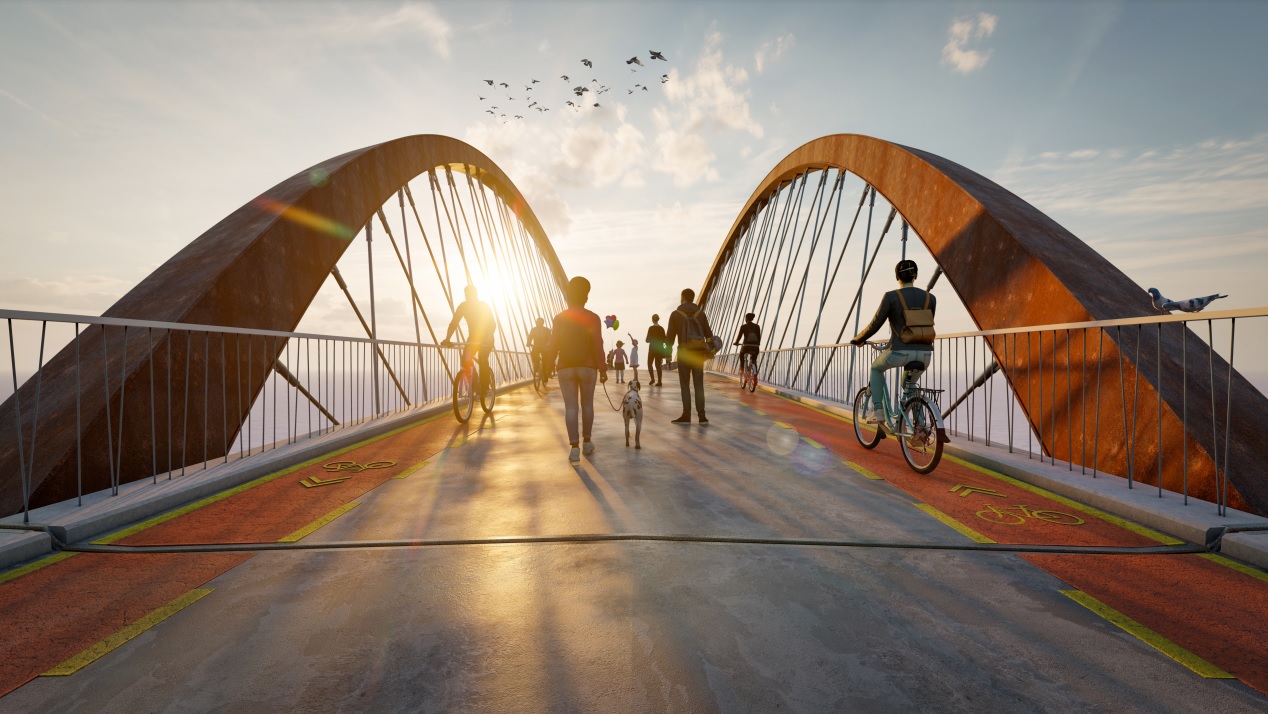
| Kategoria | Projekty infrastrukturalne |
|---|---|
| Rok | 2021 |
| Kraj | Hungary |
| Organizacja | CÉH Planning, Developing and Consulting Inc. |
| Partnerzy projektu | Sweco Rail & Infra Oy |
| Autor | Bozsik Gábor |
| Współautorzy | Kólya Borbála, Jussi Hamalainen, Pozsgai Péter |
| Klient | Sweco Rail & Infra Oy |
| Miejsce budowy | Hyvinkää, Finland |
| Tags |
A Finnországban, Helsinkitől 50 km-re északra található Hyvinkää városában épülő Vanhankirkonsilta nevű gyalogos és kerékpáros híd egy új fejlesztési területet köt össze egy már meglévő városrésszel egy vasútvonal felett. A híd főtervezője a Sweco Rail & Infra Oy, a főnyílás ívhídjának megtervezésével a CÉH zRt-t bízta meg. A híd teljes hossza 300 méter, jelen projekt a főnyílást áthidaló 55 méter támaszközű híd 3D modellje. A szerkezet egy alsópályás, függesztett ívhíd. A szabadon álló, kifelé dőlő vonórudas acél ívekre ún. „network” rendszerű függesztőrudak függesztik fel az öszvér pályát, amely egyben a vonórúd funkciót is betölti. A híd acél elemei nagyrészt corten acélból készülnek, melynek jellemzője, hogy a felületén kialakuló oxidréteg védi meg az időjárás viszontagságaitól.
A kifelé dőlő, szabadon álló ívek az igénybevételek követése, és esztétikai szempontok miatt változó magasságú és szélességű hegesztett trapéz keresztmetszetűek. Az ívek mentén a lemezvastagságok változása is követi az igénybevételeket. A függesztőrudak bekötőlemezei a trapéz keresztmetszet alsó övén keresztül a belső, merőleges diafragmákhoz rögzítettek.
A vasbeton pálya alatt két hossztartó fut, közöttük kereszttartó rendszerrel. A hossztartók az ívekhez hasonlóan trapéz keresztmetszetek, melyek a híd két végén kiékeléssel kötnek be a végkereszttartókba. A vasbetonnal történő együttdolgozást fejes csapok biztosítják mind a hossz-, mind a kereszttartókon. A hossztartók külső oldalán acél konzolok kerültek kialakításra, melyek a függesztőrudak alsó lehorgonyzási pontjai. A konzollemezek követik a bekötő kábelek irányát.
A modellezés során a legnagyobb kihívást az ívtartó gerincének a kiszerkesztése jelentette. Ez lényegében egy csonkakúp felület, amit változó magasságú kezdő- és középső keresztmetszetbe kellett illeszteni. További nehézséget jelentett a pályalemez alatti trapéz keresztmetszetű hossztartók rendkívül nagy lekerekítő sugara (576,47m) és az így adódó alacsony húrmagasság. Ezeket finomra hangolt „Speed and Accuracy” beállításokkal tudtuk kezelhetővé tenni.
The Vanhankirkonsilta pedestrian and bicycle bridge in Hyvinkää, Finland, 50 km north of Helsinki, connects a new development area with an existing part of the city above a railway line. The lead designer of the bridge was Sweco Infra & Rail Oy, which commissioned CÉH Zrt. to design the arch bridge at the main span. The total length of the bridge is 300 meters. The scope of this project is the 3D model of the 55-meter long main span bridge spanning over the main opening.
The main span bridge is a steel tied arch bridge with a reinforced concrete deck and steel network hanger system that had been designed in 3D using Construsoft Tekla package. The composite bridge deck, which is also the tying chord is suspended by hanger rods to the freestanding, arch girders being inclined outwards. The steel parts are mostly made of weathering CORTEN steel, on which surfaces the arisen thin oxide layer protects the structure from weather conditions, eventually from the development of further corrosion.
Steel arches have tapered trapezoid welded sections aligned to the arisen actions throughout their length while complying with the architectural intentions, as well. Due to a more utilized structure, along with the tapered sections, varying plate thickness is also applied. Bottom gusset plates of the hangers are connected to the box sectioned tie edge beams, which are connected to the internal diaphragm beams positioned perpendicularly to the bridge axis.
The reinforced concrete deck is supported by two longitudinal girders and a system of cross-girders. The longitudinal girders are trapezoid sections alike the arches and are connected with haunches perpendicularly to the two box-sectioned end cross girders. The concrete deck is attached to the longitudinal and cross girders by headed shear studs. On the outer side of the longitudinal girders, there are gusset plates for the hangers. These plates are set at different angles of each hanger.
One of the biggest challenges of the modeling was to design the webs of the arch girders. This is basically a truncated cone surface, which is fitted according to the tapered section of the arches. Another difficulty was the excessively small curvature of the tie beams aligned to the longitudinal section of the deck. We have been able to handle these by speed and accuracy facilities.

